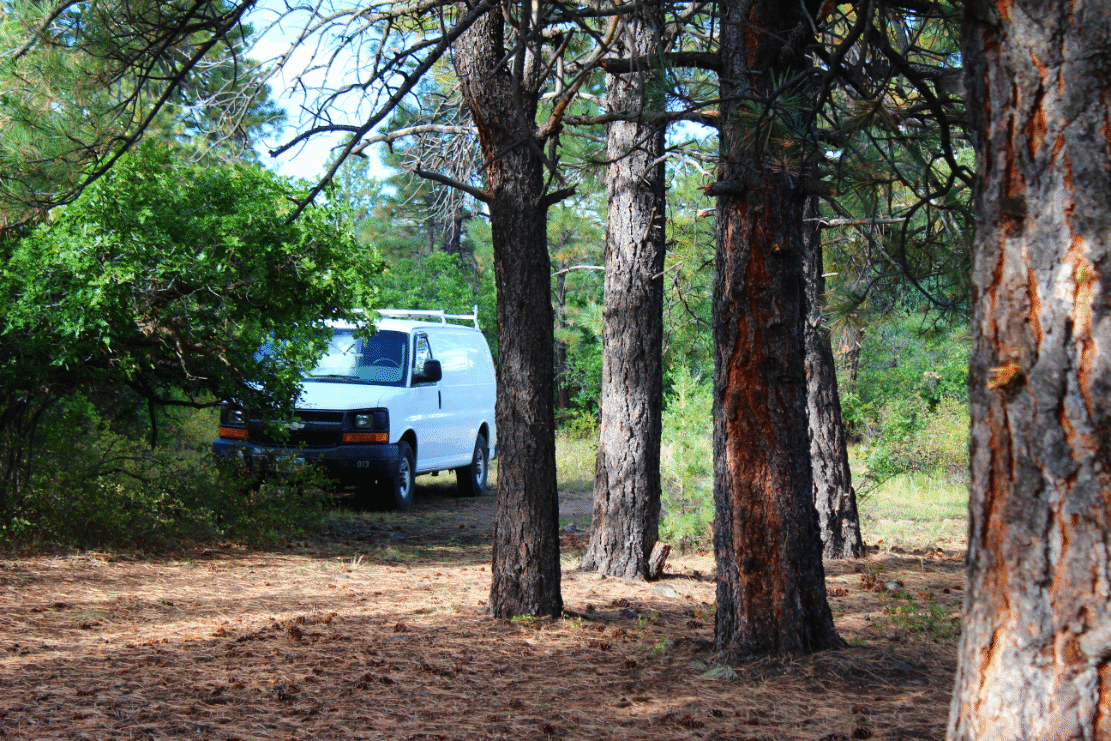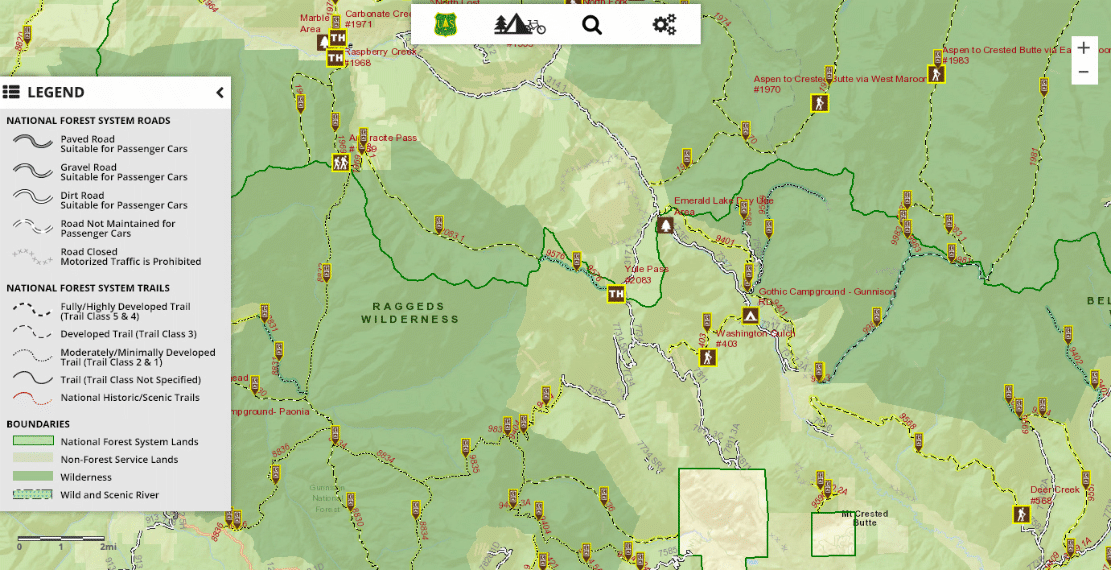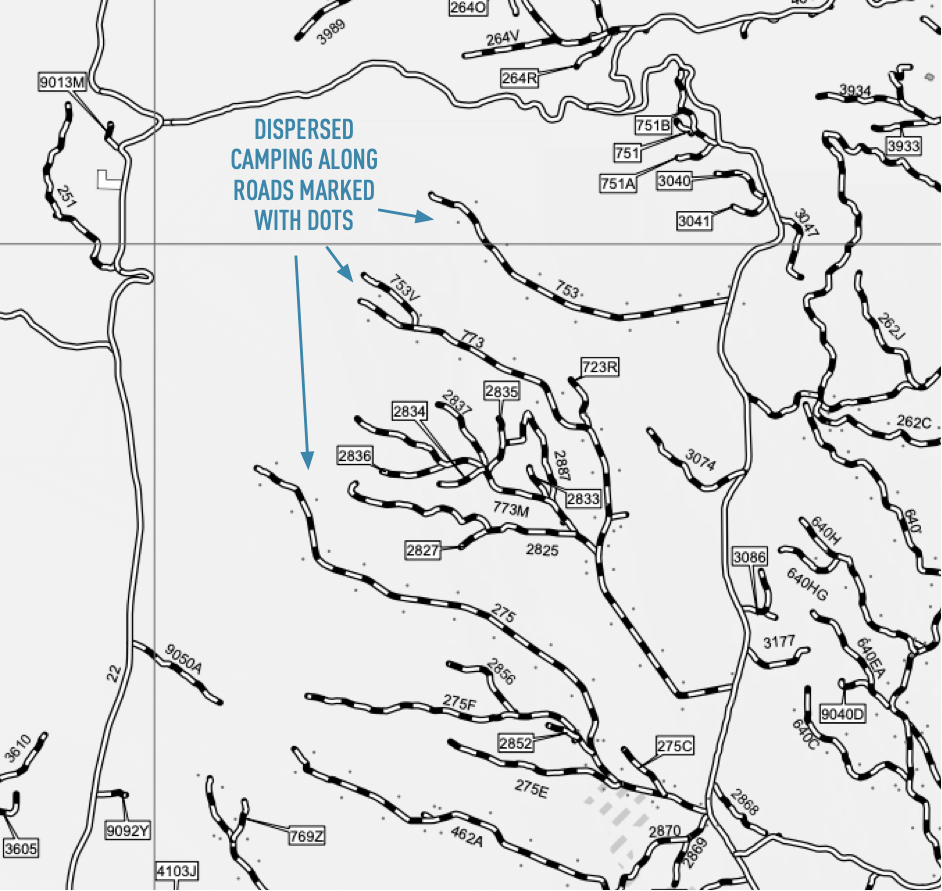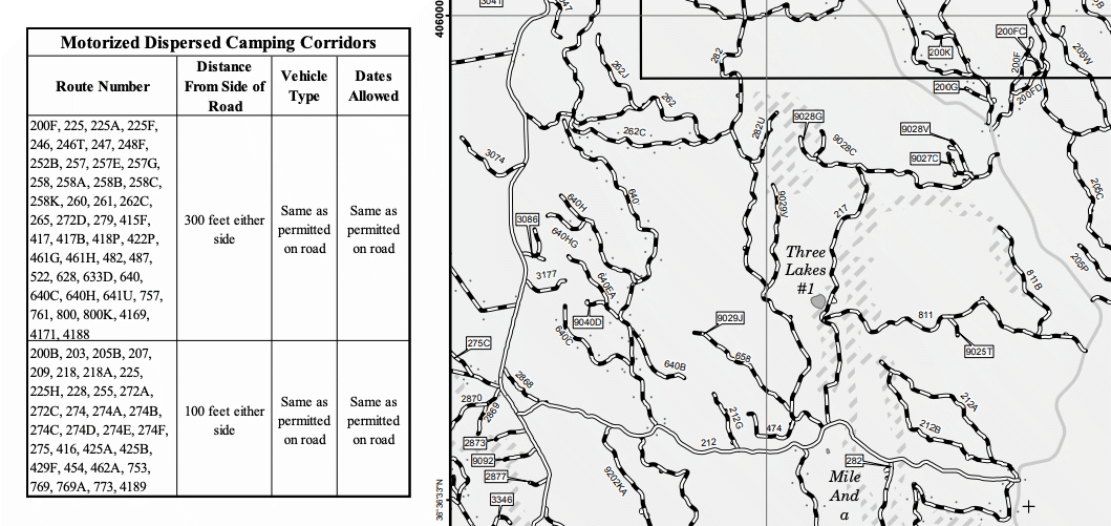
LET’S SAY YOU’RE DRIVING THROUGH A NATIONAL FOREST. (You know you are because you saw the brown and yellow sign declaring you were entering one.) You see dirt roads with numbered brown posts to your left or right disappearing into the forest. Where do they go? And are there dispersed camping spots there?
You could turn off, explore, and see what luck has in store for you. That can be fun or worrisome, depending upon your nature.
Or you could consult Forest Service maps and increase your chances of finding a nice boondocking spot.
Interactive Visitor Map
Before you get too far from civilization, while you still have an internet connection, it’s a good idea to check the Forest Service’s Interactive Visitor Map. It’s aimed at recreational users, which serves our purposes better than maps intended for, say, the timber industry.

The first thing you see is a menu of activities, as well as choices for the type of vehicle you want to use. You might select Camping & Cabins, Hiking, Trailheads, and Highway Legal.


Next, zoom in—way in—to find your general area. Click on the markers for information about road type: paved, gravel for dirt, suitable for passenger vehicles or not, and so on. There are also links to area-specific websites with even more details, including any fees or permits, seasonal restrictions, water and toilet availability, GPS coordinates, and driving instructions. Following the links will also lead to more information about dispersed camping locations.

Ask a Ranger
Ranger stations are also good sources for information on current road conditions, any area closures, campfire bans, which areas are crowded, hunting seasons, and so on. It’s a good idea to stop and get the scoop before venturing farther. Rangers might even share the locations of their secret favorite spots, or at least have general recommendations. I once asked a ranger in the Mt. Hood district for a recommendation. He directed me up a road where the dispersed sites tended to be above the cloud layer. I had sunshine for my solar panel and a view all the way to Mt. Rainier.
Motor Vehicle Use Maps
Many of the National Forests—particularly the ones with heavy recreational use—publish Motor Vehicle Use Maps (MVU) showing not only the network of Forest Service roads, but also which roads have dispersed camping spots along them. That information can save you a lot of fruitless wandering.

Printed maps are available at ranger stations or as downloadable PDFs at this site.
Although MVU Maps indicate which Forest Service roads have dispersed campsites (but not their exact locations) the maps don’t tell you how large the sites are, how much overhead clearance there might be, how level they are, whether there’s sun or shade, and so on. You have to check that out for yourself. But at least you would know where to look.

They help us, we help them
Sometimes we think the Forest Service just wants to give us a bad time. But their goal is to maintain a balance between protecting the forests and supporting responsible public use. These maps and the information on their website exist to help us, not to run us off. We can return the favor and serve our own interests by following the rules. Because if we don’t, it will result in more restrictions, area closures, and harsher enforcement.

We use these maps (and others) often. Always interesting when the same road is labeled / numbered differently on USFS maps from most others. Gaia GPS “premium” now has larger cell phone company overlays available giving us better hope of cellular signal…if we really want it!
We seek places without a cellular telephone signal.
Sadly, in my home state of Michigan, there is very little; close to nothing fitting the general criteria indicated.
One must travel far out west to easily find access to these lands; a cost prohibitive condition for most Great Lakes area residents, given the current fuel expenses now.
In Minnesota, we have state forests. You might check that possibility in Michigan.
Also Superior NF and Chippewa NF.
Huron-Manistee NF: https://www.fs.usda.gov/activity/hmnf/recreation/camping-cabins/?recid=18536&actid=34
Hiawatha NF: https://www.fs.usda.gov/activity/hiawatha/recreation/camping-cabins/?recid=13267&actid=34
Ottawa NF: https://www.fs.usda.gov/activity/ottawa/recreation/camping-cabins/?recid=12303&actid=34
Plus there are Michigan State Forests: https://www.michigan.gov/dnr/things-to-do/camping-and-lodging/backpack
All the National Forests, by state: https://nationalforests.us/
Thank you Al for those Michigan links!
Great information